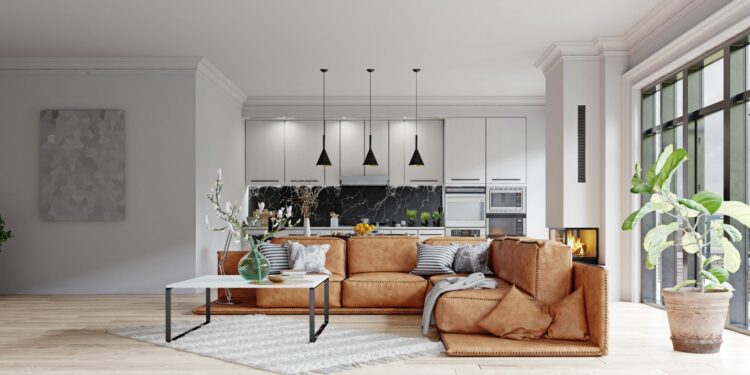Finding the right interior design style can feel overwhelming, especially when you’re bombarded with a million design trends and Instagram-worthy homes. You may feel torn between bohemian maximalism, sleek minimalism, or cozy cottagecore. Incorporating elements like wood corbels and brackets can add architectural charm, whether you’re aiming for rustic warmth or a touch of vintage elegance in your space. The pressure to get it “right” can easily lead to frustration and an identity crisis. But guess what? Designing your space doesn’t have to be stressful. In fact, it can be a fun and revealing journey of self-discovery.
Start With What You Love
First, take a step back from the design catalogs and trends that flood social media. Focus on the things that you love. What makes you happy? Is it the colors of nature, cozy fabrics, or sleek modern designs? Your home should reflect your personality and lifestyle, not just what’s trending.
Consider taking a look at your wardrobe. The colors, patterns, and textures you gravitate toward can give you valuable clues about your aesthetic. If you love neutral tones and structured pieces, you might lean toward minimalism. If you prefer bold prints and layered fabrics, eclectic or bohemian styles may appeal to you.
Create a Mood Board
Now that you’ve identified what speaks to you create a visual mood board. Whether you do this digitally through platforms like Pinterest or by cutting out pictures from magazines, seeing everything together helps you pinpoint what themes are consistent.
Colors: Do you prefer warm, earthy tones or cool, crisp colors?
Textures: Velvet, linen, wood, or steel?
Furniture Styles: Mid-century modern, rustic, industrial, etc.
Accessories: What kinds of art, lighting, and decor do you like?
Flooring: Hardwood, tiles, or carpets? Light or dark wood planks? Stone effect tiles or real ones? Colourful, patterned or neutral carpet?

The goal is not to find a single, rigid style but to develop a cohesive look that resonates with you.
Identify Your Functional Needs
While aesthetics are important, functionality is key to a well-designed space. Before you dive into specific styles, consider how you live. If you have kids or pets, a white sofa might not be the best choice. Similarly, flooring plays a huge role in functionality – wood floors, for example, are durable and easier to clean, making them ideal for high-traffic areas, while carpets offer comfort but might require more upkeep.
Ask yourself:
- Do I prefer open spaces or cozy nooks?
- Do I need a lot of storage, or can I keep things minimalist?
- How much maintenance am I willing to put into my space?
By grounding your design choices in your lifestyle, you’ll avoid the common mistake of choosing a style that looks great but doesn’t work for you.
Embrace Multiple Styles
Here’s the thing: you don’t have to pick just one style. In fact, blending styles is a great way to make your space feel unique. It’s called “eclectic design,” and when done right, it can result in a dynamic, layered look that feels intentional rather than chaotic.
For example, you might love the clean lines of Scandinavian design but also want to incorporate a few vintage, boho elements. This is where you can play with contrast – mix old with new, bold with subtle, or minimalist with maximalist. The trick is to find a common thread, whether that’s color, texture, or scale, to tie everything together.
Test Before You Commit
Before you invest in new furniture or paint an entire room, test your ideas on a smaller scale. Buy a few accent pieces like throw pillows, art prints, or rugs in styles you’re considering. Live with them for a while to see how they feel. Do you enjoy the aesthetic, or do you find it too overwhelming?

Testing out smaller elements lets you experiment without the financial or emotional commitment of a full-room makeover.
Trust Your Instincts
Finally, don’t let the fear of making the “wrong” choice paralyze you. Interior design is a process, and your style will likely evolve over time as you grow and your needs change. Trust your instincts and embrace your preferences, even if they don’t fit into a neatly defined box. Your home should reflect you, not a magazine cover.
If you make a choice and realise it wasn’t quite right, that’s okay – design is an iterative process. What matters most is that your space makes you feel comfortable, happy, and truly at home.
Your Home, Your Rules
Finding your interior design style doesn’t have to be a daunting, crisis-inducing experience. By focusing on what you love, considering your lifestyle, and allowing yourself the freedom to experiment, you can create a home that’s a true reflection of your identity – without the stress. Remember, there’s no right or wrong when it comes to designing your space. Your home is your sanctuary, and it should tell your story, not follow someone else’s rules.
















